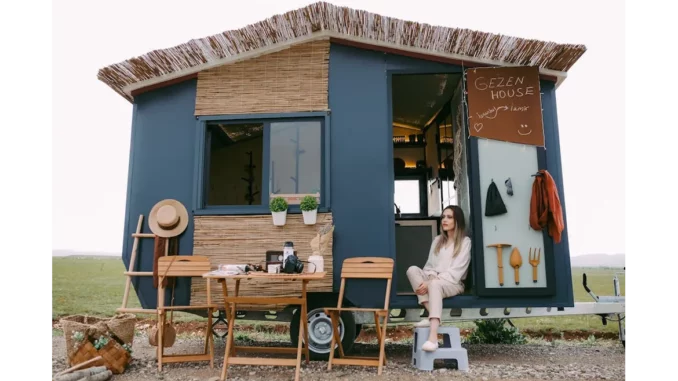
When you step into a tiny house, the initial impression might be one of curiosity—how do people live comfortably in such a limited area? As I sat down with Emily Carter, an experienced tiny house dweller and interior design enthusiast, her insights painted a vivid picture of how a small space can be transformed into a haven of both functionality and style. Our conversation unveiled the secrets to creating an inviting and efficient tiny home.
Elegancia.homes: Creators of elegant spaces for personal wellness and relaxation.
Emily, who has been living in her 280-square-foot tiny house for over three years, greeted me with a warm smile as I entered her snug yet surprisingly airy home. Her space was a testament to her design philosophy: “Living small doesn’t mean living less,” she said, gesturing around her carefully curated living area.
Maximizing Every Inch
Emily’s journey into tiny living began with a desire to simplify her life and reduce her environmental footprint. “The key to tiny living is making every inch count,” she explained. Her home featured clever use of nooks and crannies, with pull-out drawers hidden beneath her bed and shelves neatly tucked into corners. “It’s about finding the balance between storage and style,” she added.
One of Emily’s favourite tricks for maximizing space is using multi-functional furniture. She pointed to her sofa, which easily transformed into a guest bed. “This way, I don’t have to sacrifice comfort for practicality,” she noted. Her fold-out dining table, tucked away when not in use, exemplified how thoughtful design choices can enhance both utility and aesthetics.
A Breath of Fresh Air with Minimalism
The heart of Emily’s design philosophy lies in minimalist decor. “Minimalism isn’t about having less; it’s about making room for more of what you love,” she said. Her home was adorned with a few high-quality pieces, each serving a specific purpose. The result was a clutter-free environment that felt open and inviting.
Emily’s walls were painted in soft whites and pastels, creating an illusion of spaciousness. “Light colours reflect more light, making the space feel larger,” she explained. Her choice of light grey furnishings further contributed to the sense of airiness. “It’s all about creating a cohesive palette,” she emphasised.
Nature’s Touch
Emily’s home was a celebration of natural elements. As we talked, I noticed the warmth of wooden floors and the rustic charm of exposed beams. A small stone backsplash added texture, while potted plants brought life and vibrancy to her living area. “Incorporating natural elements makes the space feel grounded and alive,” she said.
The plants, carefully chosen for their air-purifying qualities, also served a dual purpose. “They not only enhance the aesthetic but also improve air quality,” Emily pointed out. Her selection ranged from small succulents to hanging greenery, each adding its own unique touch to the overall design.
Lighting the Way
Emily’s approach to lighting was both strategic and stylish. Large windows allowed natural light to flood the space, creating a bright and airy atmosphere. “Maximising natural light is crucial,” she explained. Strategically placed mirrors amplified the effect, bouncing light around the room.
Her layered lighting strategy ensured flexibility and ambiance. Emily demonstrated how her dimmable lights could transition from bright and energetic to soft and cosy. “It’s all about creating the right mood for each moment,” she said, adjusting the lights as if setting the scene for a play.
Practical Insights for Tiny Living
As our conversation wrapped up, Emily shared some practical tips for those considering the tiny house lifestyle. “Start with a clear vision of what you need and what’s truly important to you,” she advised. Her journey was one of trial and error, but she emphasised the importance of embracing the learning process. “It’s about finding joy in simplicity and making your space reflect your personality.”
Emily’s tiny house was not just a home; it was a carefully crafted sanctuary that embodied her values and lifestyle. Her journey highlighted the power of thoughtful design and the beauty of living with intention. As I left her charming abode, I carried with me a newfound appreciation for the art of living small with style.
Conclusion
Emily’s story serves as a testament to the transformative power of design in tiny living. By embracing minimalist decor, utilising natural elements, and employing smart lighting strategies, tiny house dwellers can create spaces that are both functional and visually appealing. Her insights remind us that a tiny house is more than just a place to live; it’s an opportunity to craft a lifestyle centred on clarity, comfort, and creativity.
- Sarah Dale


Be the first to comment